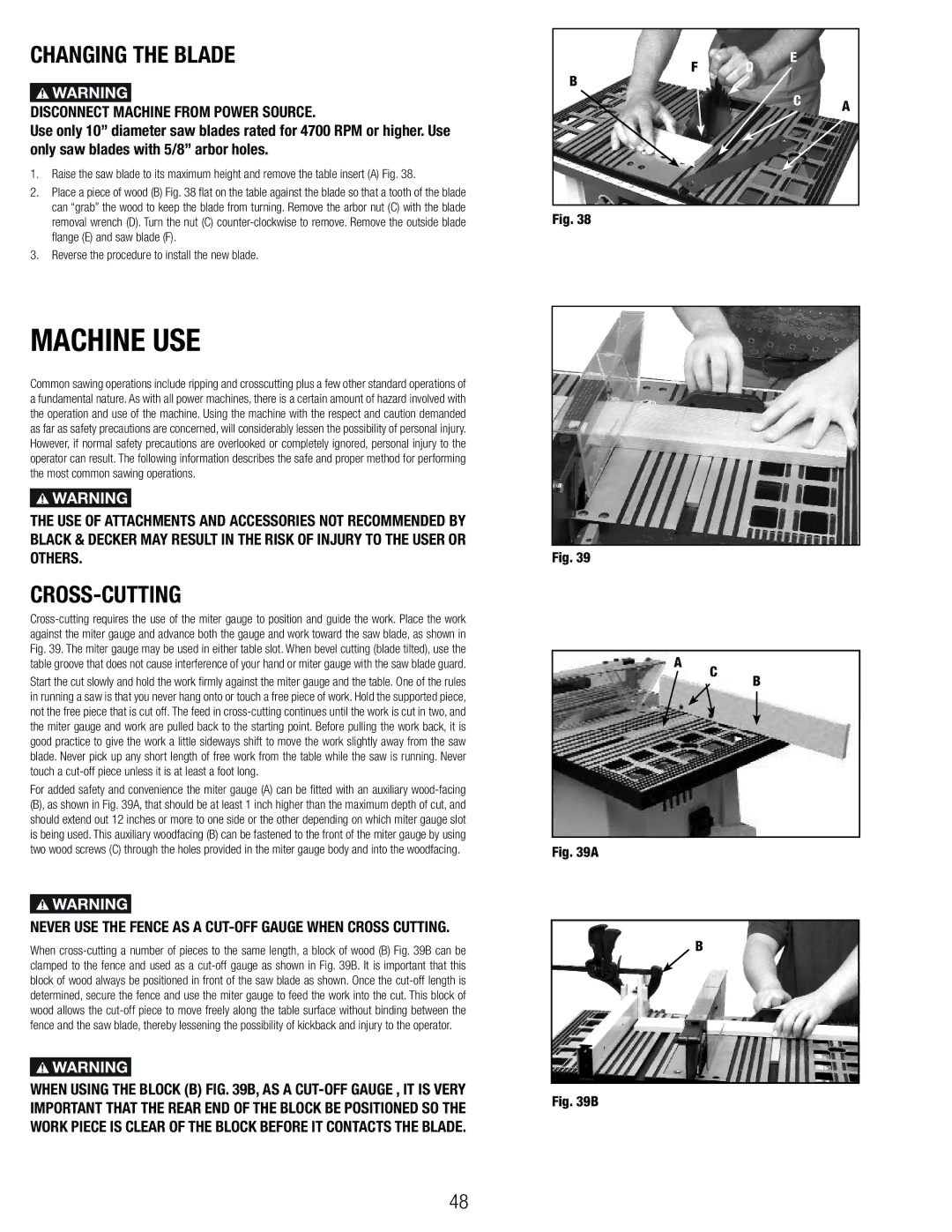
CHANGING THE BLADE
DISCONNECT MACHINE FROM POWER SOURCE.
Use only 10” diameter saw blades rated for 4700 RPM or higher. Use only saw blades with 5/8” arbor holes.
1.Raise the saw blade to its maximum height and remove the table insert (A) Fig. 38.
2.Place a piece of wood (B) Fig. 38 flat on the table against the blade so that a tooth of the blade can “grab” the wood to keep the blade from turning. Remove the arbor nut (C) with the blade removal wrench (D). Turn the nut (C)
3.Reverse the procedure to install the new blade.
F | D | E |
|
|
| ||
B |
|
|
|
|
| C | A |
|
|
|
Fig. 38
MACHINE USE
Common sawing operations include ripping and crosscutting plus a few other standard operations of a fundamental nature. As with all power machines, there is a certain amount of hazard involved with the operation and use of the machine. Using the machine with the respect and caution demanded as far as safety precautions are concerned, will considerably lessen the possibility of personal injury. However, if normal safety precautions are overlooked or completely ignored, personal injury to the operator can result. The following information describes the safe and proper method for performing the most common sawing operations.
THE USE OF ATTACHMENTS AND ACCESSORIES NOT RECOMMENDED BY BLACK & DECKER MAY RESULT IN THE RISK OF INJURY TO THE USER OR OTHERS.
CROSS-CUTTING
Start the cut slowly and hold the work firmly against the miter gauge and the table. One of the rules in running a saw is that you never hang onto or touch a free piece of work. Hold the supported piece, not the free piece that is cut off. The feed in
For added safety and convenience the miter gauge (A) can be fitted with an auxiliary
Fig. 39
A C B
Fig. 39A
NEVER USE THE FENCE AS A CUT-OFF GAUGE WHEN CROSS CUTTING.
When
WHEN USING THE BLOCK (B) FIG. 39B, AS A
48
B
Fig. 39B
